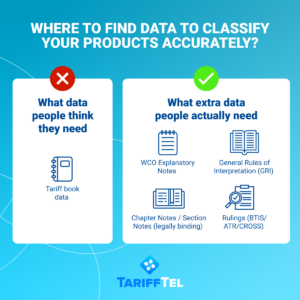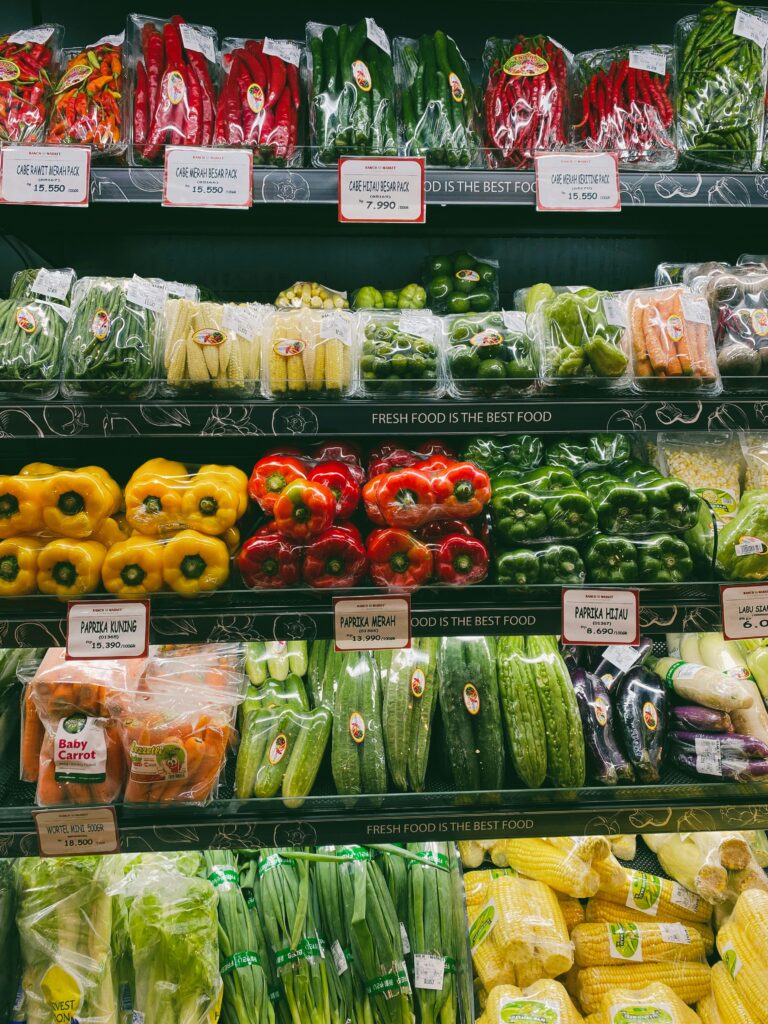The importance of data in customs classification
Topics

Accurate data is the backbone of successful customs classification, ensuring that businesses can correctly assign Harmonised System (HS) codes to their products and remain compliant with international trade regulations. Without reliable data on your products, including their composition, use, origin, and other technical specifications, companies risk costly misclassifications that could result in penalties, delays, and even reputational damage.
The devil really is in the data. Especially when we’ve found through our analysis that 2 out of every 5 HS codes used today are incorrect.
Here, we look at three data challenges many businesses face when classifying their goods, and how to mitigate them with the right approach and technology system like TariffTel in place. We also look at what data matters in classification and how incoming regulation from the EU is having an impact on what product data needs to be made available by manufacturers and suppliers.
Three common data challenges in classification
In modern supply chains today, data is often scattered across legacy systems, making it difficult to obtain a full picture of what makes up each product. This means that when classifying goods, teams are often basing their classification decisions on outdated or incomplete product information, which directly impacts compliance and puts their business at risk.
Here are three of the most common data challenges found in classification today.
Data accuracy and integration
Precise customs classification relies on accurate product data drawn from a range of sources, often found across legacy systems or disparate data platforms. Key product details like descriptions and materials must be aligned precisely with the appropriate HS codes. Yet, businesses often base their classification on outdated or incorrect product information—sometimes provided by suppliers—resulting in misclassifications and compliance risks.
 This is particularly complex when classifying food products, not least because of the sheer volume of information that must be consulted in order to be fully compliant. This visual highlights the extra data people need to classify any food item correctly including nutritional values.
This is particularly complex when classifying food products, not least because of the sheer volume of information that must be consulted in order to be fully compliant. This visual highlights the extra data people need to classify any food item correctly including nutritional values.
Frequent regulatory updates
Trade regulations and tariff codes undergo frequent updates, meaning businesses need to stay informed about changes. Misclassifying products due to outdated information can lead to penalties, fines, or shipment delays. To stay compliant, businesses need to be vigilant about regulatory changes and track and enforce any updates quickly across their business. They need a process in place that ensures their systems are up to date with the very latest changes, as and when they happen.
 As the classification process depends on specific information about products, such as composition, use, origin, and other technical details, incoming legislation can influence what data suppliers and manufacturers need to make available for food retailers to be compliant. For example, the EU Deforestation Regulation (EUDR) will require companies to share the origin of certain raw materials including wood, cattle, cocoa, coffee, oil palm, rubber and soy, to prove that these goods do not originate from recently deforested areas or contribute to forest degradation. The aim is to limit the EU’s impact on global deforestation and biodiversity loss, an important step in recognising that the EU marketplace is the world’s largest contributor of deforestation, after China. This legislation was introduced in June 2023, and was due to become mandatory in December 2024, however, in a significant move, the EU has proposed a one-year delay which means, if approved, the regulation will now come into force from 30th December 2025.
As the classification process depends on specific information about products, such as composition, use, origin, and other technical details, incoming legislation can influence what data suppliers and manufacturers need to make available for food retailers to be compliant. For example, the EU Deforestation Regulation (EUDR) will require companies to share the origin of certain raw materials including wood, cattle, cocoa, coffee, oil palm, rubber and soy, to prove that these goods do not originate from recently deforested areas or contribute to forest degradation. The aim is to limit the EU’s impact on global deforestation and biodiversity loss, an important step in recognising that the EU marketplace is the world’s largest contributor of deforestation, after China. This legislation was introduced in June 2023, and was due to become mandatory in December 2024, however, in a significant move, the EU has proposed a one-year delay which means, if approved, the regulation will now come into force from 30th December 2025.
Limited resources and manual processes
Customs classification demands specialised knowledge, yet many companies lack dedicated expertise in-house or rely on manual processes, which can be slow and prone to errors. These mistakes often arise from misinterpreted or overlooked details. These errors usually come about when explanatory notes are not consulted or misinterpreted. Outsourcing classification to TariffTel can streamline operations and reduce the workload as well as ensure that all additional sources, such as explanatory notes, are consulted and considered appropriately. Businesses also have access to our TariffTel team of classification experts who are on hand to solve the most complex of queries.
Here’s two complex food queries our team helped resolve which highlight how crucial accurate product data is when determining the correct HS code.
Accurate data is indispensable in customs classification, serving as the foundation for compliance and trade efficiency. Solutions like TariffTel automate and streamline the classification process, reducing the risks of manual data input which can lead to inaccurate and incomplete data at the start. With clear, accurate data, companies are better positioned to assign HS codes correctly, reduce classification errors, and navigate compliance with ease.
Find out more about TariffTel by contacting our team today.
Other Useful Resources
What’s ahead for customs classification in food in 2025?
The global appetite for unique and sustainable food and drink products is booming, creating exciting opportunities for e...
How incorrect HS codes are driving up costs (and how to stop it)
Accurate customs classification can make or break a business’s bottom line. Yet, many companies underestimate the impo...
Unlocking the power of data and the role of AI classification
Customs classification is the backbone of global trade compliance, ensuring products are categorised accurately under th...



